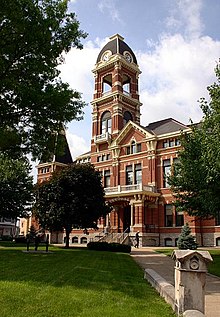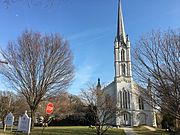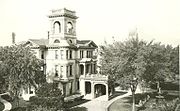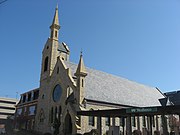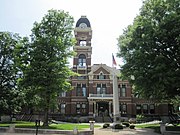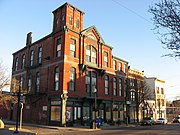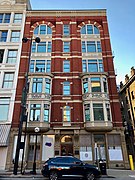
Richard Upjohn was a British-born American architect who emigrated to the United States and became most famous for his Gothic Revival churches. He was partially responsible for launching the movement to popularity in the United States. Upjohn also did extensive work in and helped to popularize the Italianate style. He was a founder and the first president of the American Institute of Architects. His son, Richard Michell Upjohn, (1828-1903), was also a well-known architect and served as a partner in his continued architectural firm in New York.

James Gamble Rogers was an American architect. A proponent of what came to be known as Collegiate Gothic architecture, he is best known for his academic commissions at Yale University, Columbia University, Northwestern University, and elsewhere.
St. Patrick's Church, Saint Patrick's Church, St. Patrick's Roman Catholic Church or Saint Patrick's Roman Catholic Church, and similar, may refer to:

Alfred Bult Mullett was a British-American architect who served from 1866 to 1874 as Supervising Architect, head of the agency of the United States Treasury Department that designed federal government buildings. His work followed trends in Victorian style, evolving from the Greek Revival to Second Empire to Richardsonian Romanesque.
Christ Episcopal Church may refer to the following similarly named churches or parishes in the United States:
Samuel Hannaford was an American architect based in Cincinnati, Ohio. Some of the best known landmarks in the city, such as Music Hall and City Hall, were of his design. The bulk of Hannaford's work was done locally, over 300 buildings, but his residential designs appear through New England to the Midwest and the South.

Samuel Sloan was a Philadelphia-based architect and best-selling author of architecture books in the mid-19th century. He specialized in Italianate villas and country houses, churches, and institutional buildings. His most famous building—the octagonal mansion "Longwood" in Natchez, Mississippi—is unfinished; construction was abandoned during the American Civil War.

Gordon W. Lloyd was an architect of English origin, whose work was primarily in the American Midwest. After being taught by his uncle, Ewan Christian, at the Royal Academy, Lloyd moved to Detroit in 1858. There he established himself as a popular architect of Episcopal churches and cathedrals in the region, mostly in the states of Michigan, Ohio and Pennsylvania. In addition to churches, Lloyd designed several secular works, such as commercial buildings, residences and an insane asylum. Though his office was in Detroit, Lloyd lived across the river in Windsor, Ontario, Canada.

Charles Henry Owsley (1846–1935) was an English-born American architect in practice in Youngstown, Ohio from 1872 until 1912.
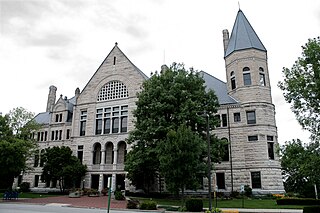
James W. McLaughlin was a Cincinnati, Ohio architect. He studied to be an architect working under famed James Keys Wilson. He fought in the American Civil War serving in the Union Army. During the late 19th century, he became a popular builder in Cincinnati. In 1870 he helped organize the Cincinnati chapter of the American Institute of Architects; that year, he was selected as a Fellow of the AIA, serving on its board.

Robert W. Gibson, AIA, was an English-born American ecclesiastical architect active in late-nineteenth- and early-twentieth-century New York state. He designed several large Manhattan churches and a number of prominent residences and institutional buildings.

Leoni W. Robinson (1851-1923) was a leading architect in New Haven, Connecticut.

Warren R. Briggs (1850–1933) was an American architect who worked in Bridgeport, Connecticut.

George W. Longstaff (1850-1901) was an American architect practicing in Bridgeport, Connecticut.

Edward Dow was an American architect from New Hampshire.

Lambert & Bunnell was a long-lived American architectural firm from Bridgeport, Connecticut, in business from 1860 to 1901. It was established by Edward R. Lambert (1834-1904) and Rufus W. Bunnell (1835-1909).
Charles T. Beardsley Jr. (1861–1937) was an American architect practicing in Bridgeport, Connecticut.

Robert W. Hill was an American architect from Waterbury, Connecticut. He was one of Connecticut's most important 19th century architects.
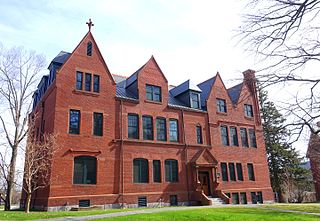
William C. Brocklesby (1847-1910) was an American architect practicing in Hartford, Connecticut.
